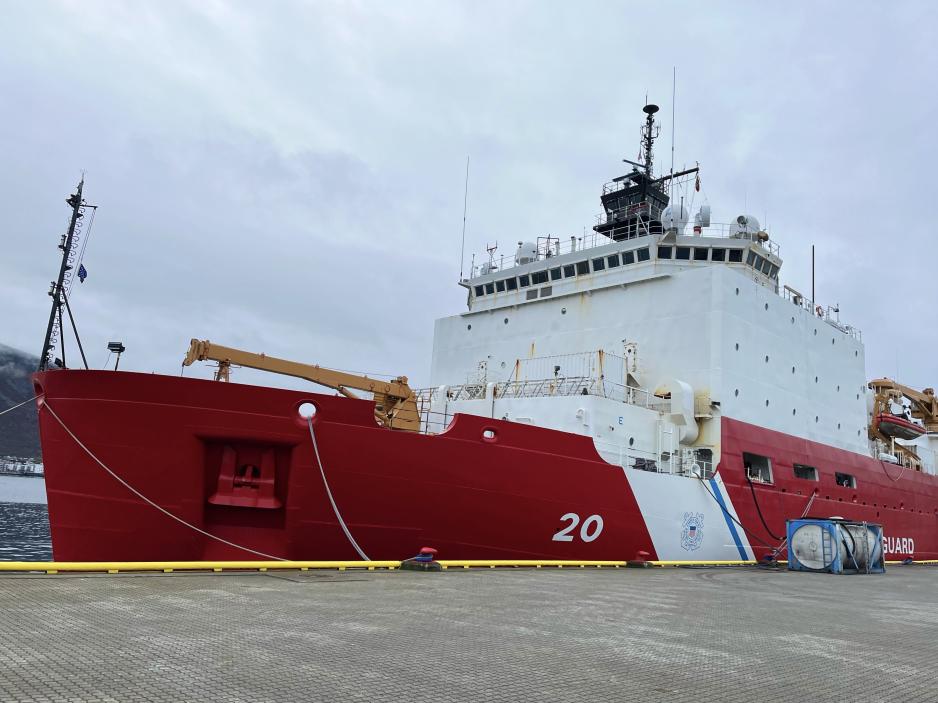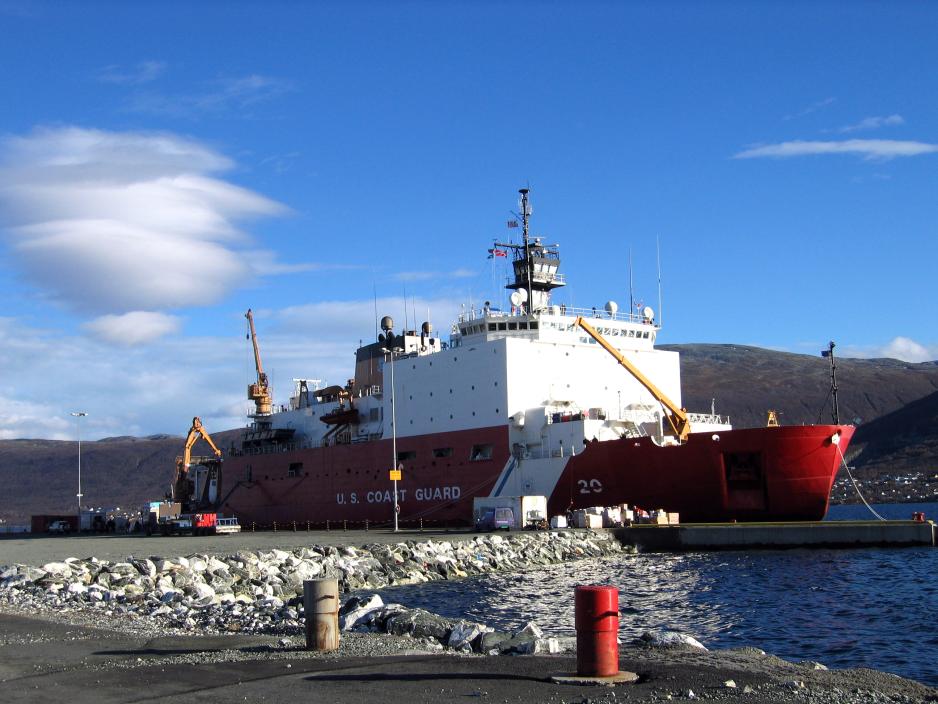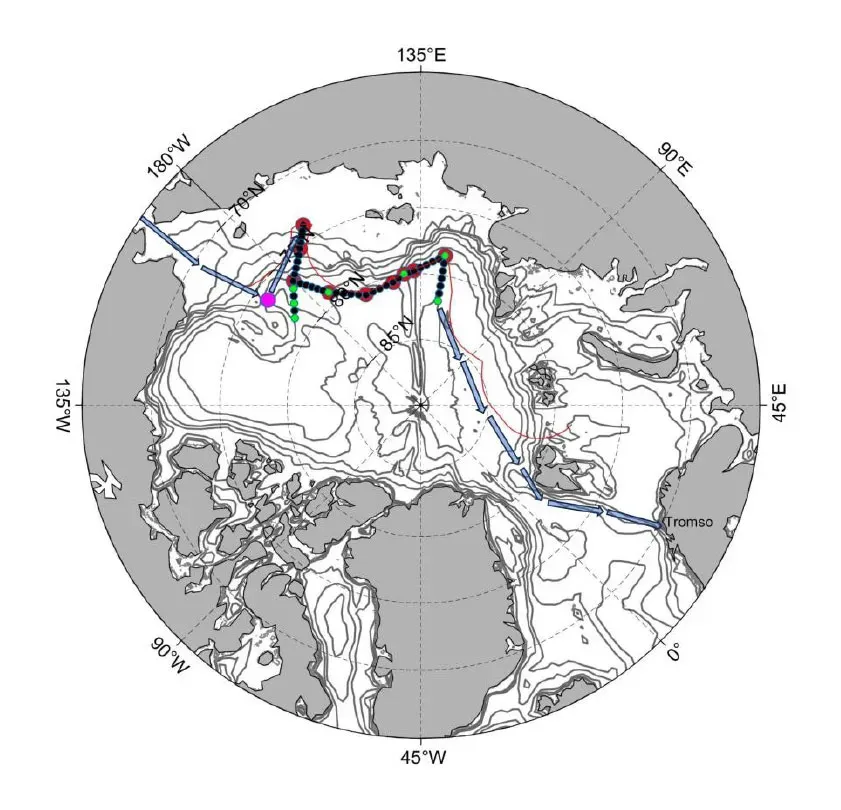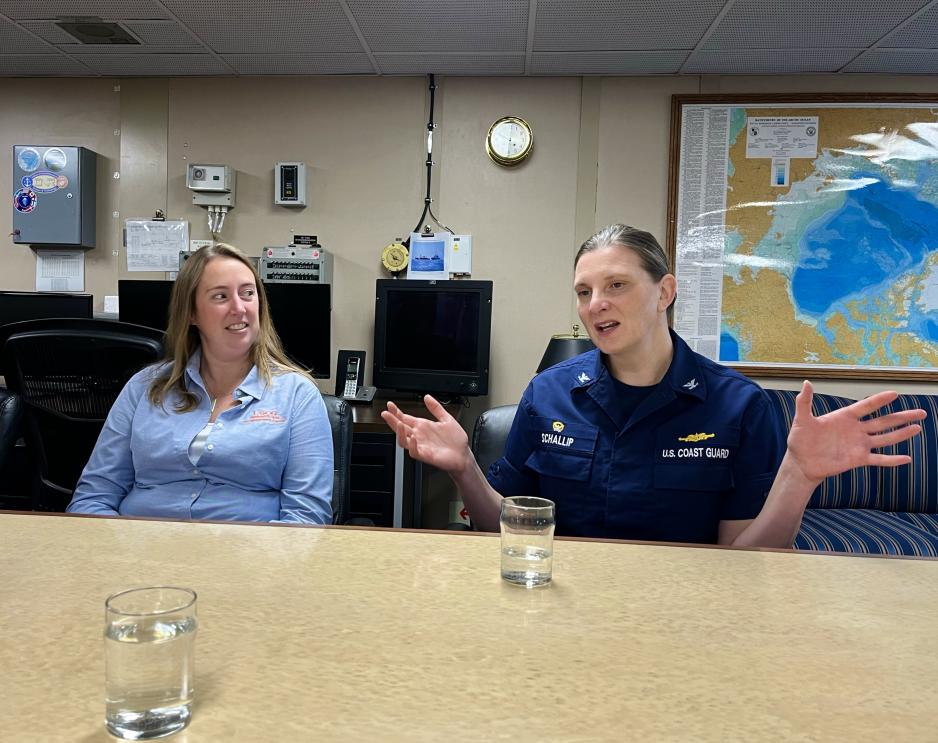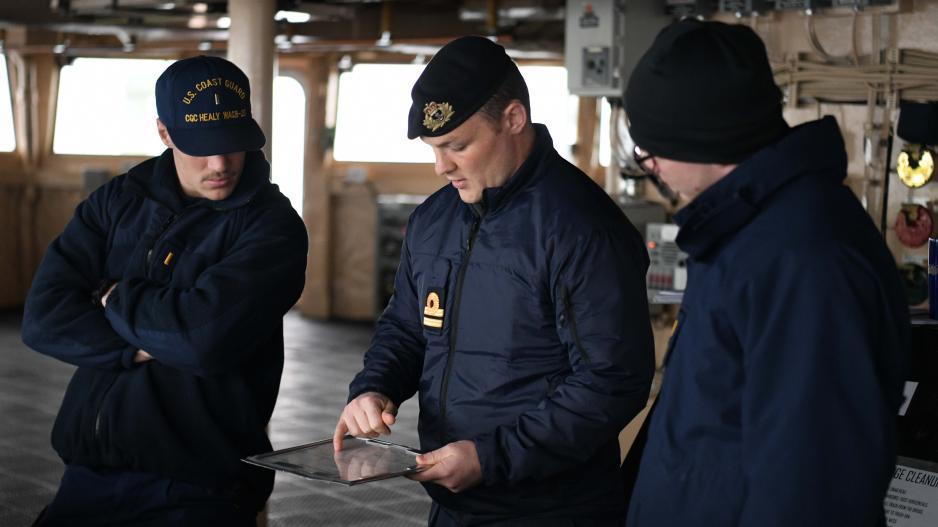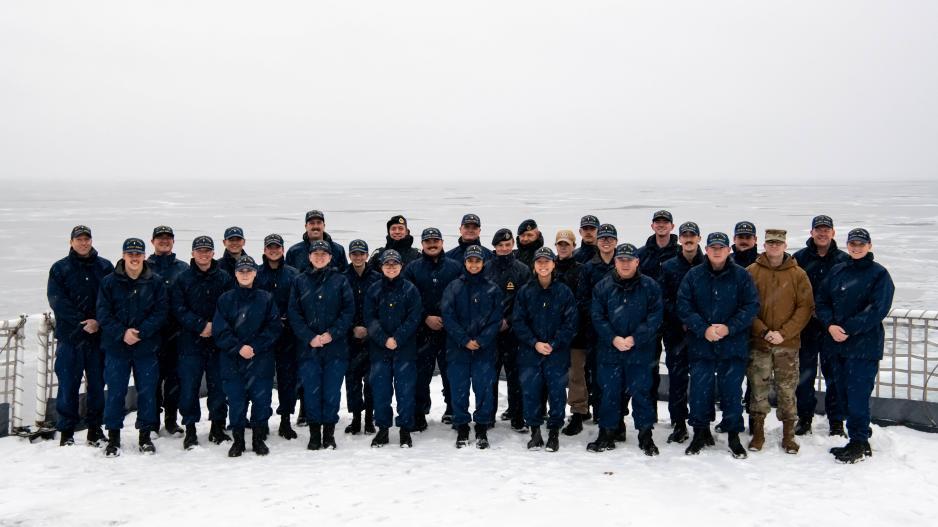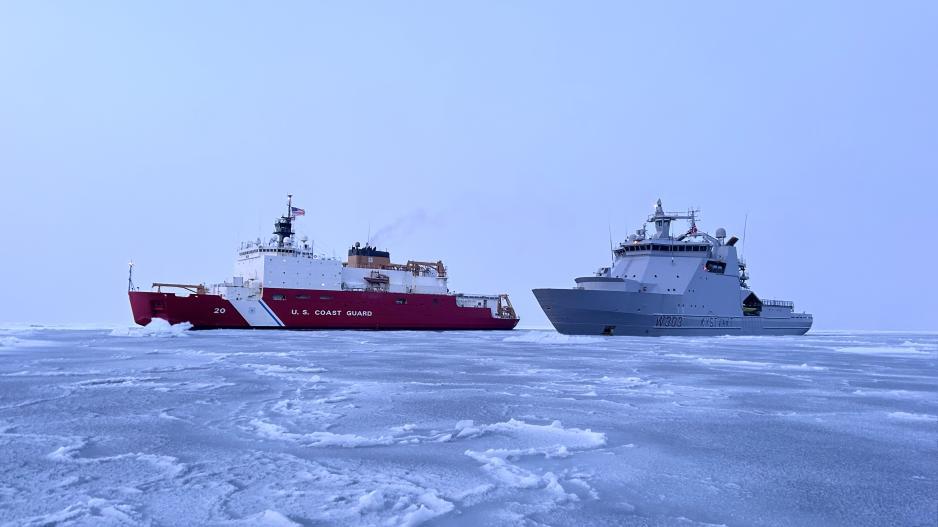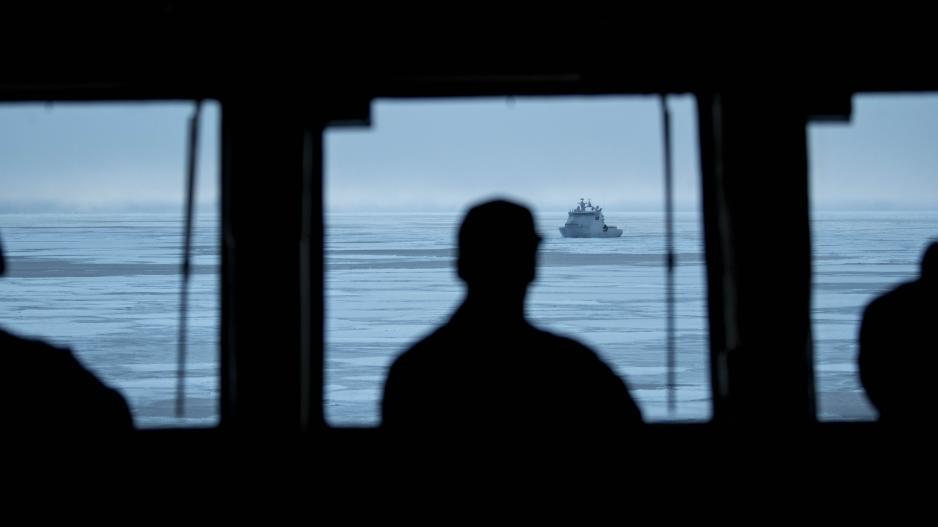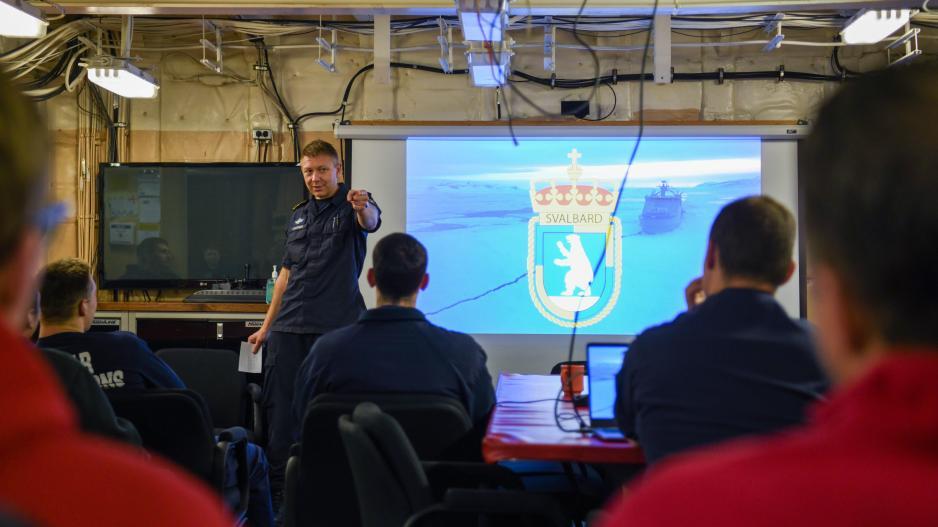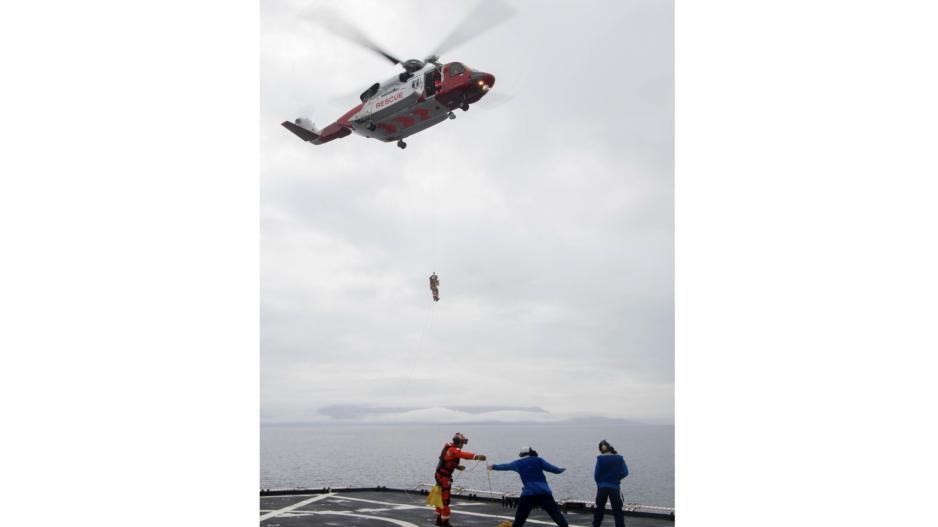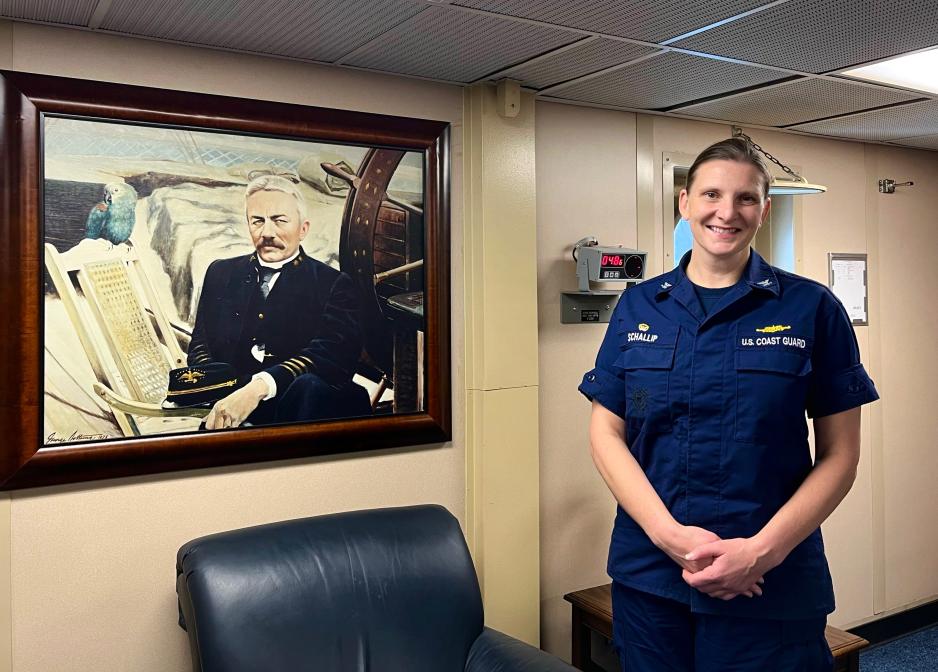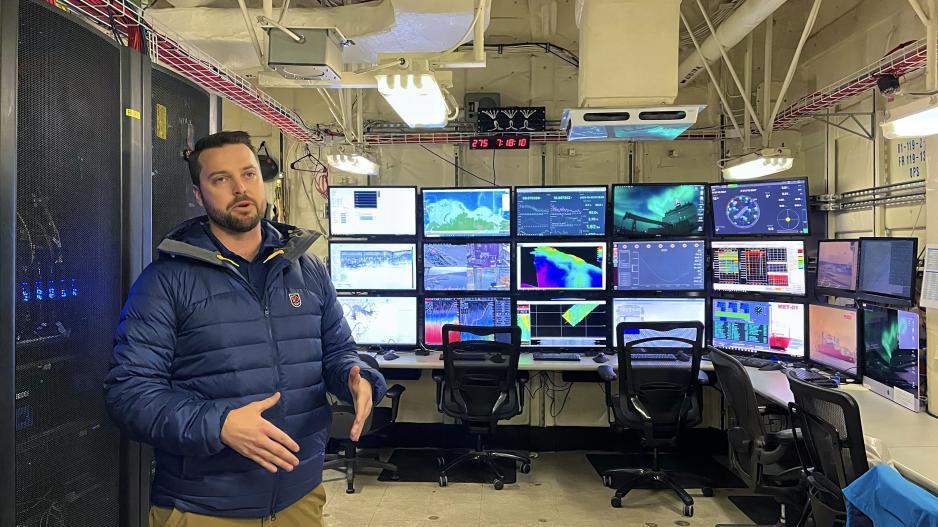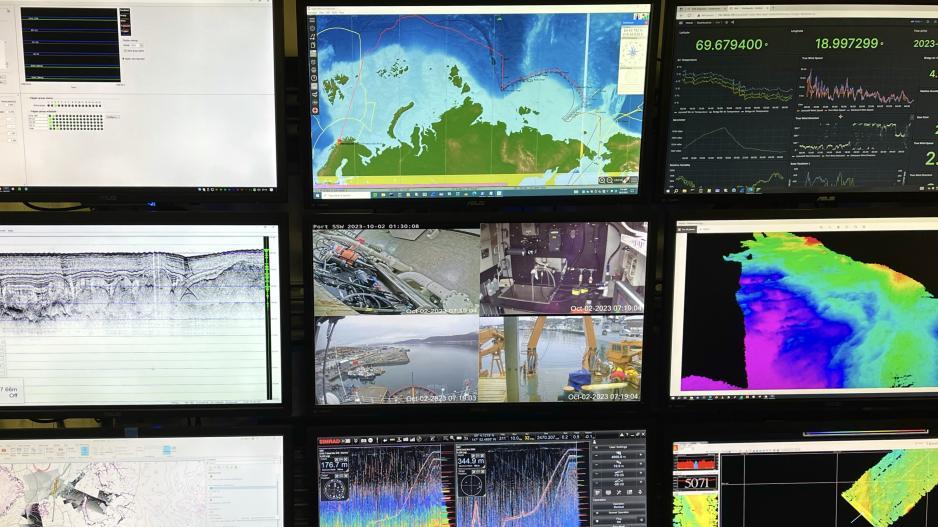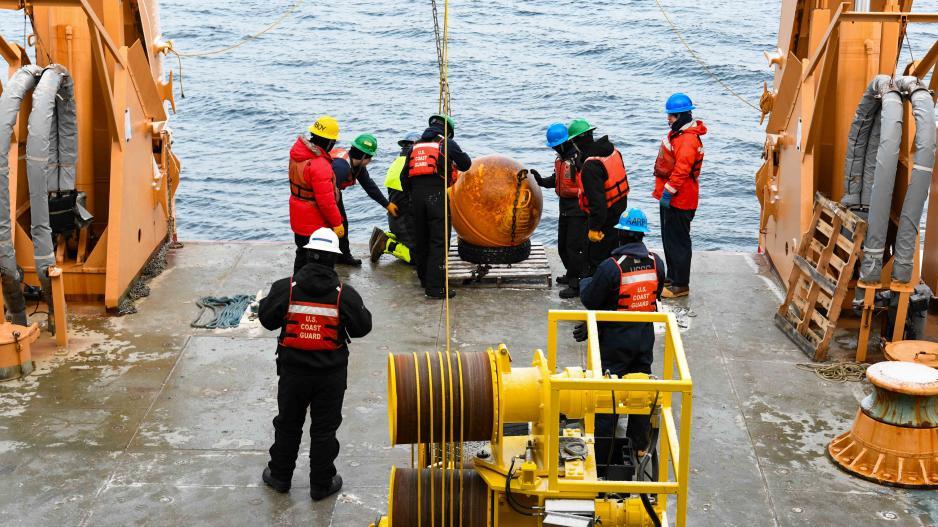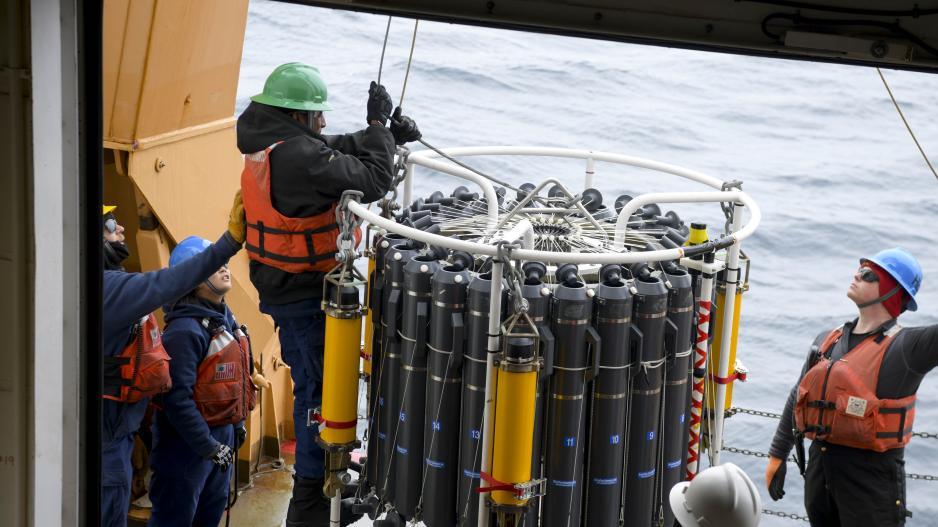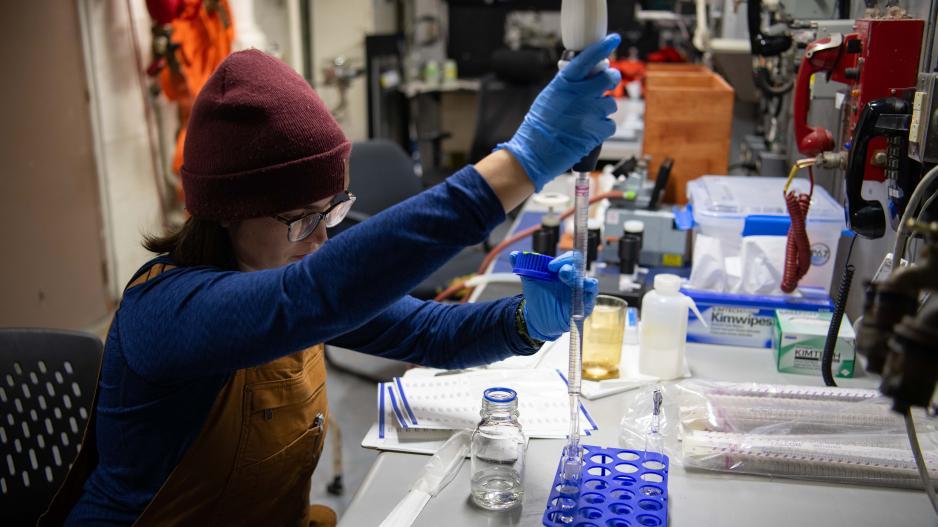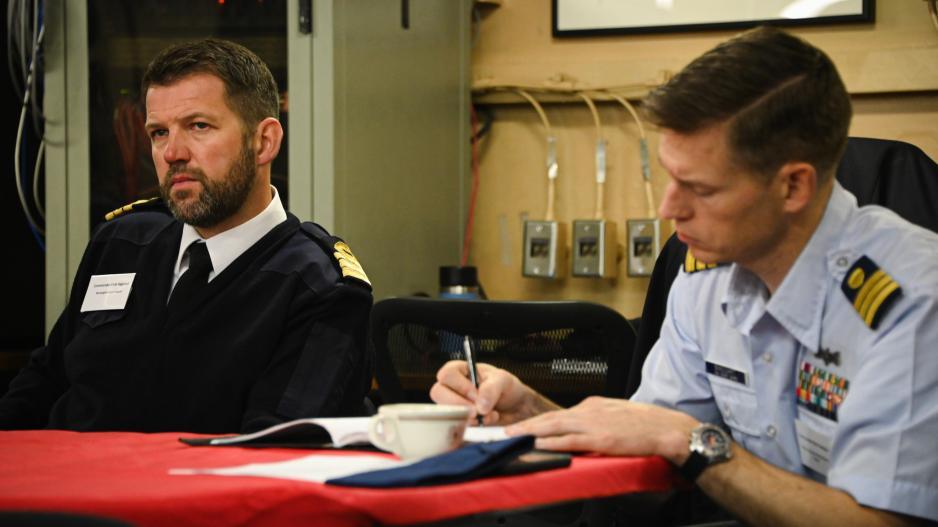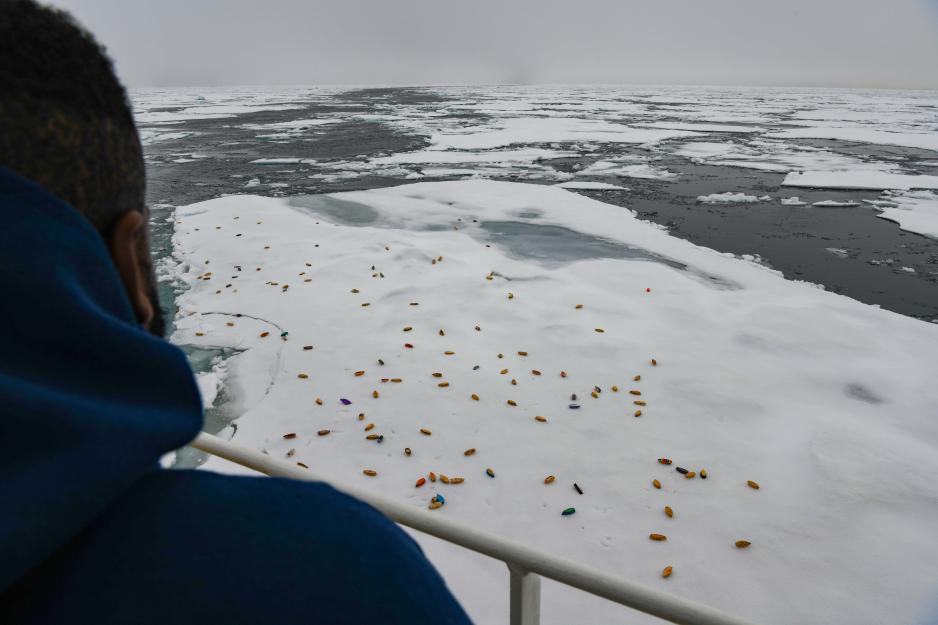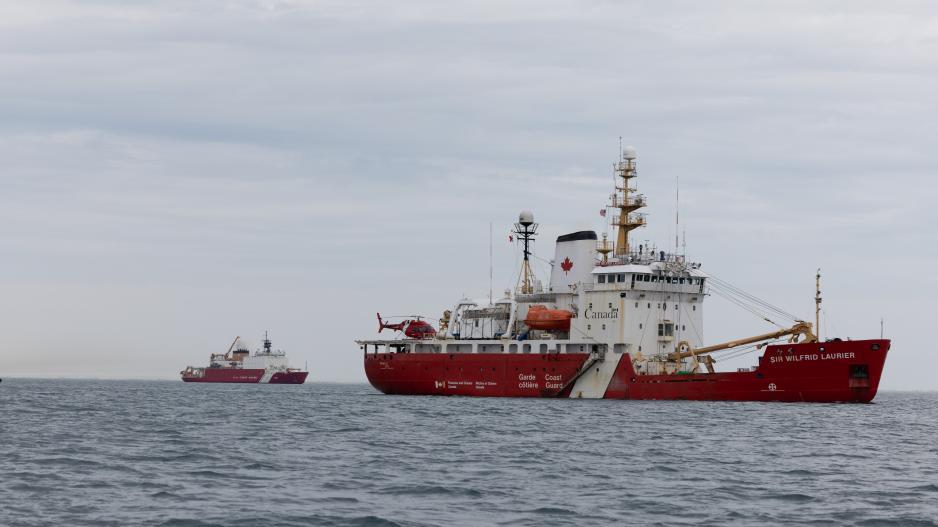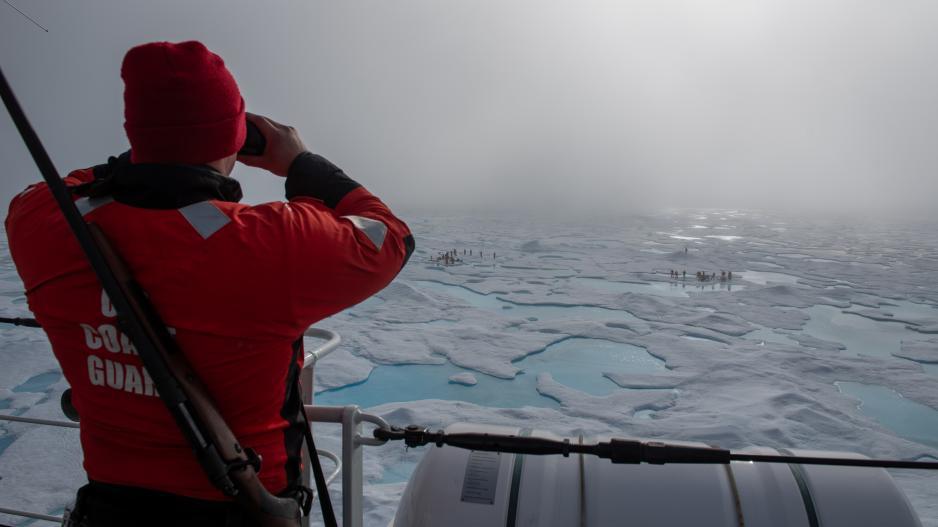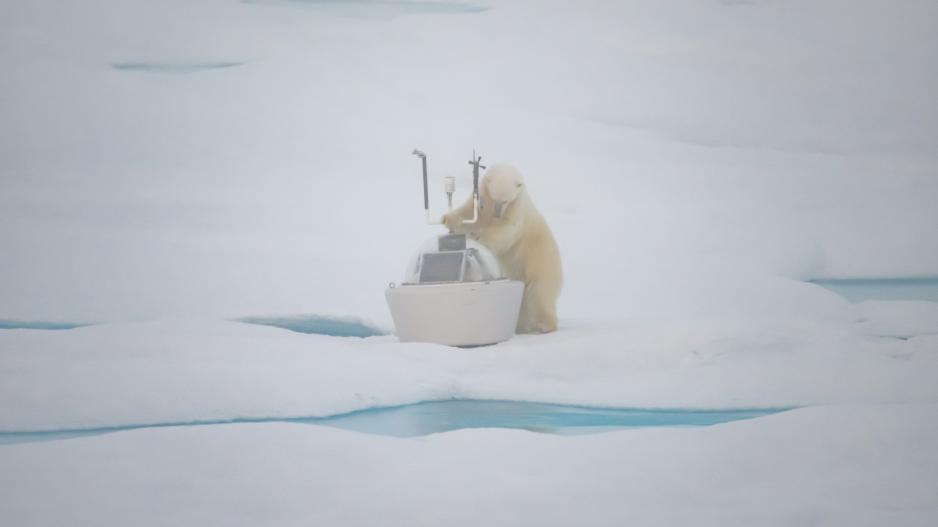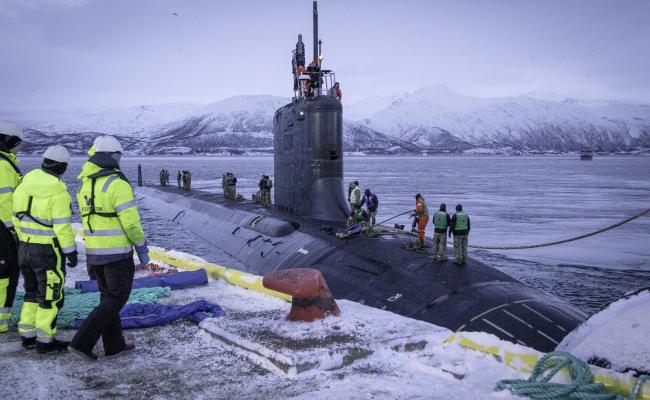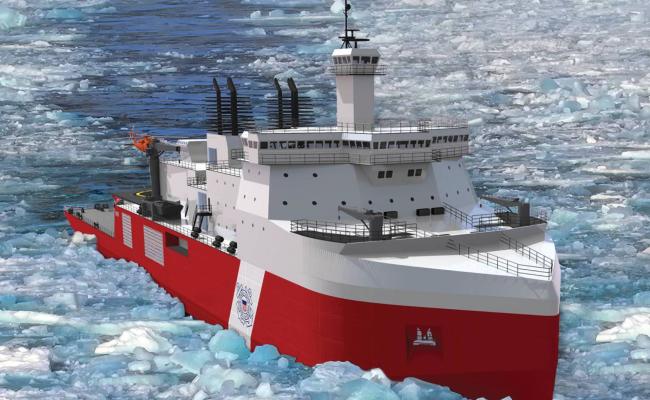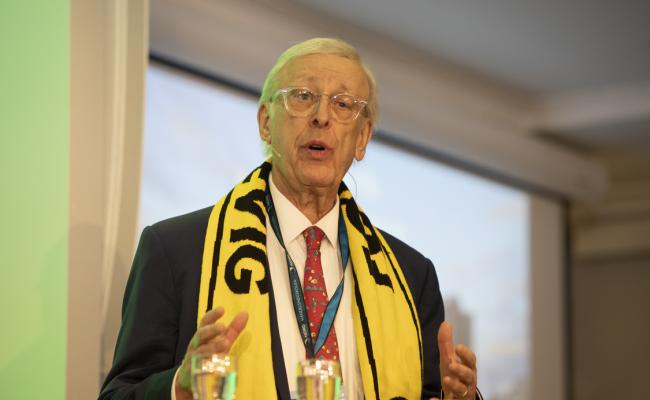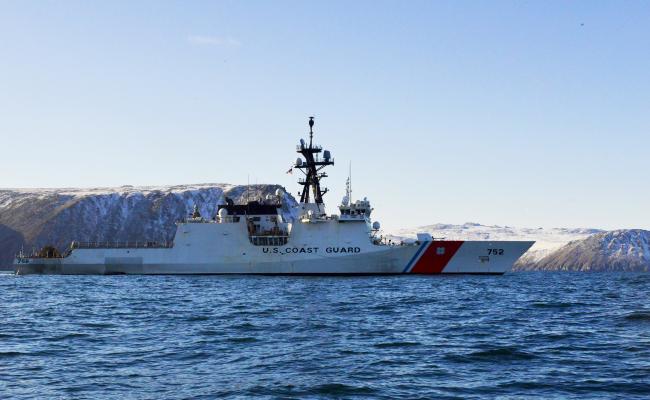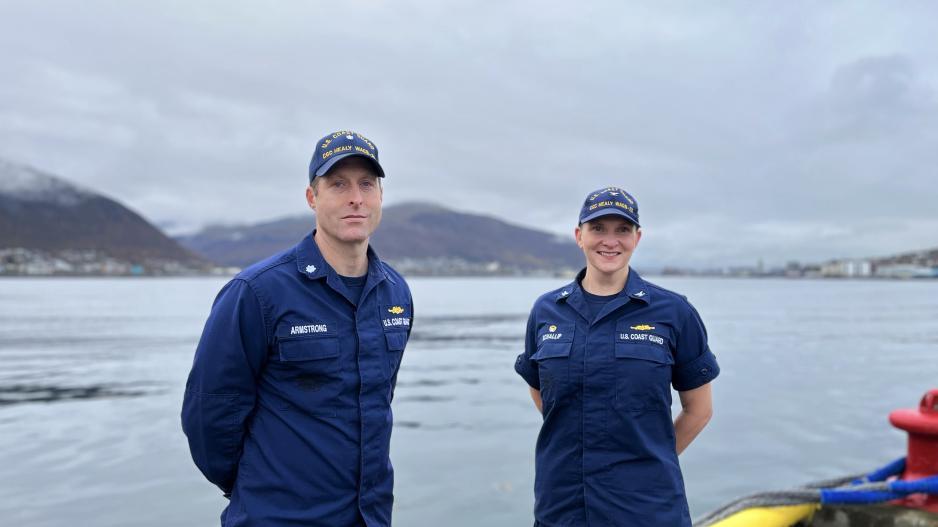
Photo gallery: USCG Healy's Commanding Officer, Captain Michele Schallip, and Executive Officer, Commander Patrick Armstrong, with the Tromsø Sound in the background. (All photos: Astri Edvardsen)
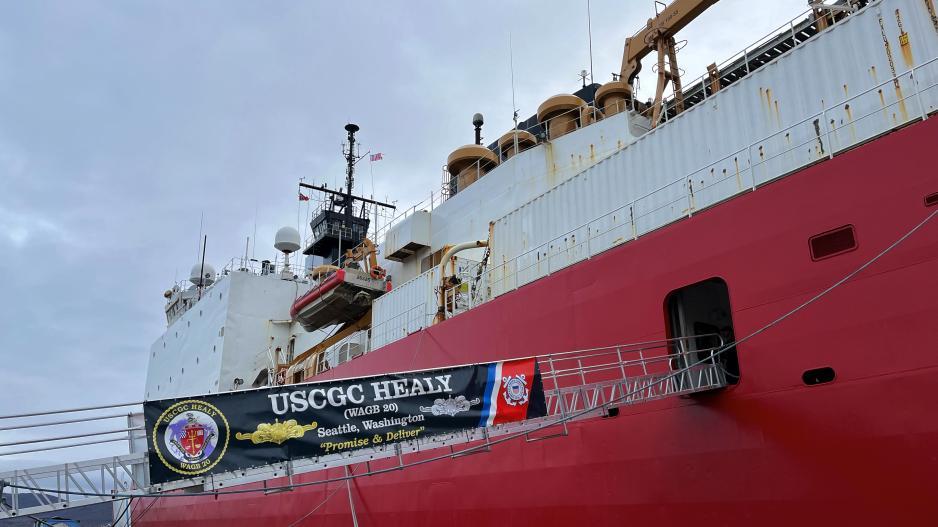
The USCG Healy, with a crew of 84 people, has its home port in Seattle, USA. The vessel is 128 meters long, 25 meters high, and weighs 16,000 tonnes when fully loaded. >
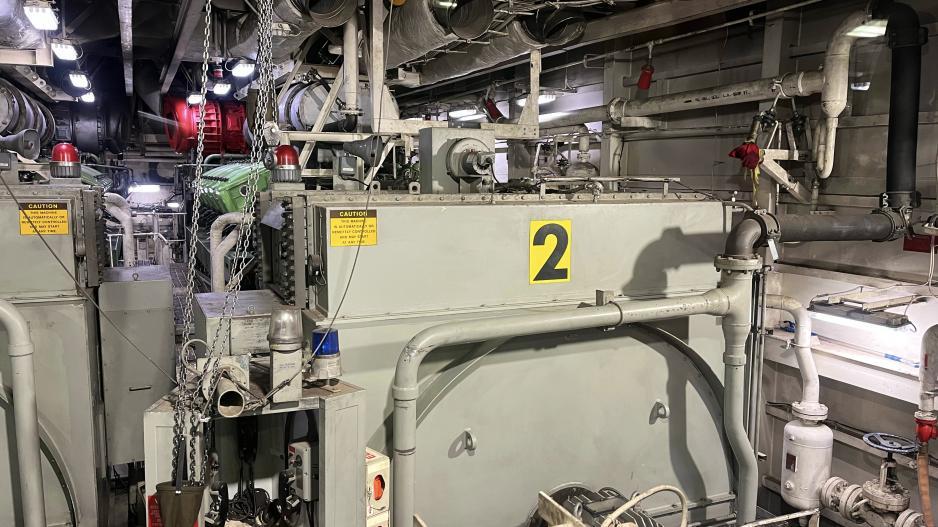
As an icebreaker, Healy has a special hull shape and great machine power, so the bow of the ship can lift up and glide along the edge of the ice, which will then break under the weight of the ship. The vessel can continuously break 4.5 feet of ice at three knots. >
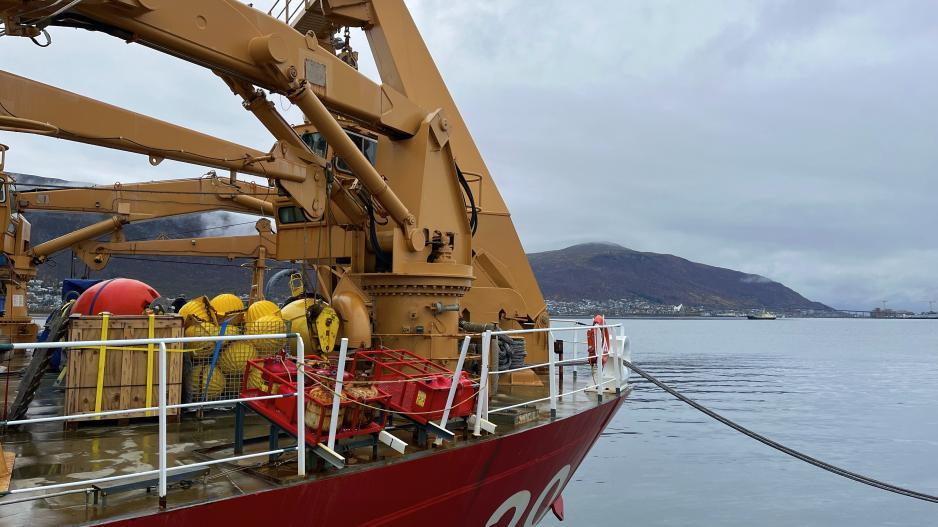
The vessel is specifically designed for Arctic research – and is also the only icebreaker of the US Coast Guard used for research. Aboard are 4200 square feet of scientific laboratory space, a number of sensor systems, oceanographic winches, and accommodation for up to 50 researchers. >
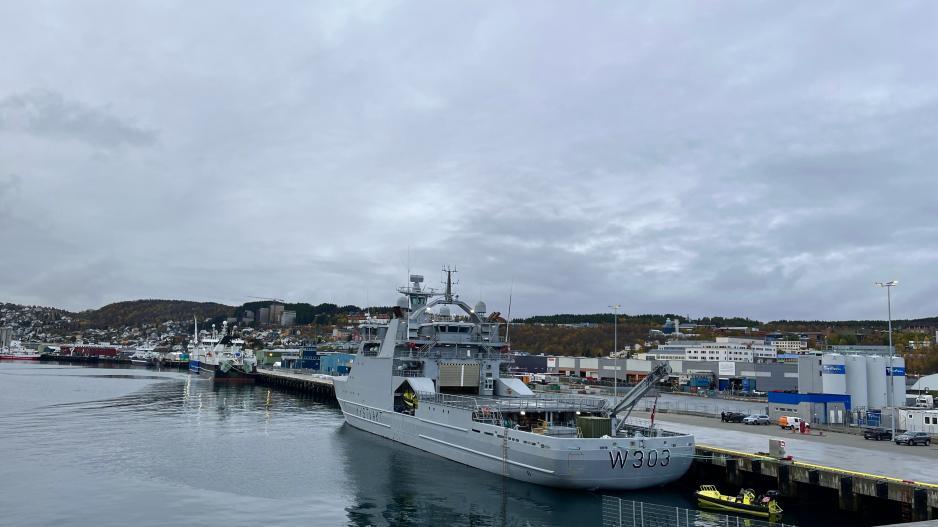
The Norwegian Coast Guard vessel KV Svalbard in the Port of Breivika, seen from the USCGC Healy. The two sailed together into the Tromsø Sound on Sunday after joint activities.

